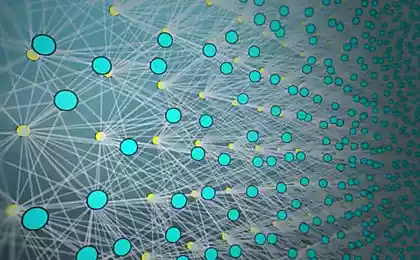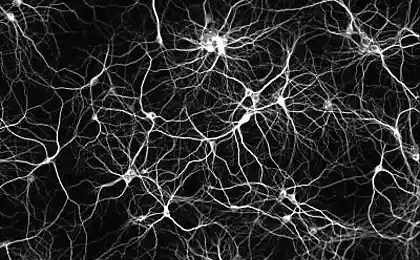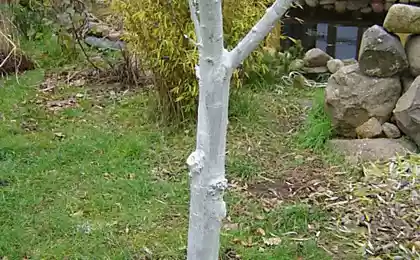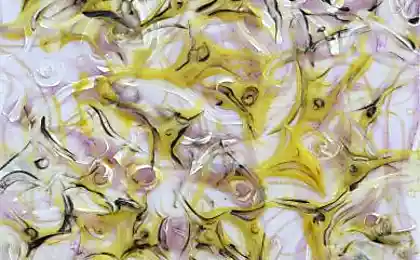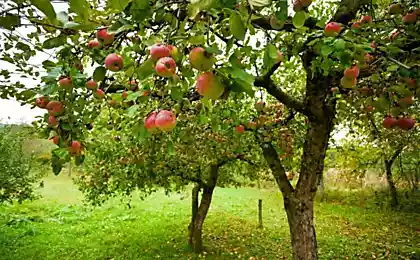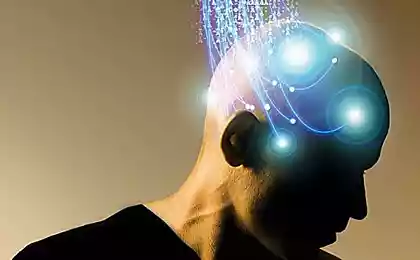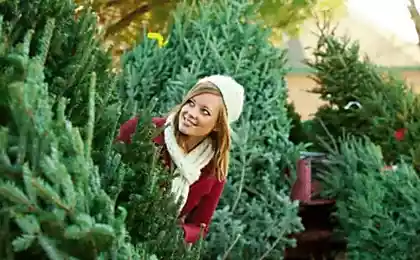489
Whitewashing of trees: when, how and whether
Do I have to whitewash the trees? To understand the meaning of whitewash, it is necessary to say a few words on the bark of a tree, which, in fact, and chemic.Bark for wood — like skin for humans: protecting internal organs, she first meets all of the unfavorable external environment.
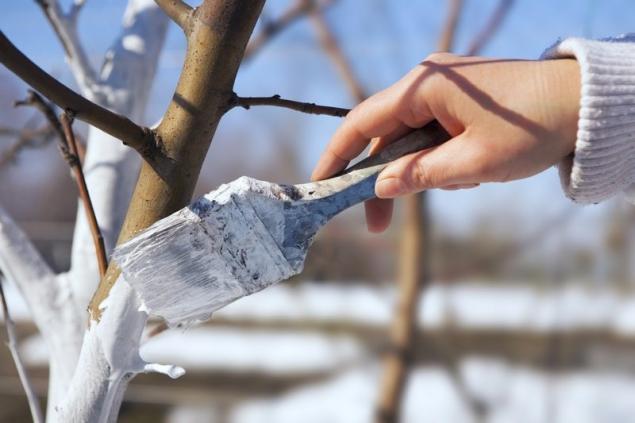
And they are many: sharp fluctuations of temperatures, biting wind, sun and extreme cold, the teeth of rodents, the action of pests, and of the people themselves with their habit to light a fire under the tree and cut on the bark of their immortal name or a message "John + Kate = love".
Cora gets sunburn and frostbite, coarse and cracked, sore and peeling. Who among us has not seen the difference between the smooth skin of the young seedling and rough cracked bark of the old? But the consequences of trauma to the skin, too, know all — to the disease in the organism to penetrate the infections and pests that weaken him, lead to premature wilting and death.
Therefore, the bark of the tree you want to protect. Here for this is whitewashing, it is:
Blanching is necessary as Mature trees and young. Many gardeners are convinced that the young trees to whitewash, because the plaster can burn tender bark. Besides, clasping the stem, it prevents its growth (thickening). Is it really so?
The problem, as always, has two sides. Without a doubt, the high concentration of lime will damage young bark, but this can be avoided. Reduce by half the lime content, use the special (trees) latex or acrylic paint or, in the end, silver biomasei. But if not blanching, then sunburn and monotony will cause a young sapling harm immeasurably greater than the possible harm from lime.
For example take a look at the seedlings that were grown in the nursery. Most often, they live there in cramped quarters and not get a light quenching. And when we plant this tree in your garden, it falls on the open space and easily gets sunburn of the bark. Therefore, young trees whitewashing is a must, especially in the autumn planting.
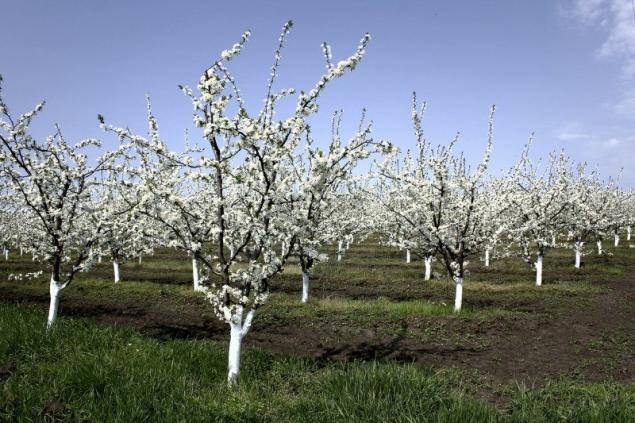
When blanching ?
Experienced gardeners recommend to whitewash the trees in the garden two or three times a year:
The most dangerous of all to wood is the Sunny days of February and cold March. Day unbleached brown trunk under the February sun warms up to +9...+11ºС — this temperature is enough to the tree woke up and started SAP flow. And night temperatures down to-10 ° C elementary freeze "tight" juice. The result is a breakdown of monotony that look like long cracks on the bark.
The color white repels sun rays and does not allow the barrel to heat up to a temperature of awakening. With whitewashed wood and spring "Wake up" a little later on, that may protect it from spring frosts to bloom it will start after them.
If autumn whitewash could not be held in February need to catch up as soon as the temperature will allow. It is not necessary to wait for the traditional April "Lenin's subbotnik" — then this procedure would actually be purely decorative. But if autumn whitewash went according to plan, the spring update can be done in February and March and even early April — when you cut time.
The third whitewash carry out not necessarily, especially if the trees are whitewashed persistent compounds, which makes it stay on for up to a year. But is it desirable, if pobelochnye layer washed away by rain or peeled.published
P. S. And remember, just changing your mind - together we change the world! ©
Source: vk.com/dacha.life?w=wall-83256656_35346

And they are many: sharp fluctuations of temperatures, biting wind, sun and extreme cold, the teeth of rodents, the action of pests, and of the people themselves with their habit to light a fire under the tree and cut on the bark of their immortal name or a message "John + Kate = love".
Cora gets sunburn and frostbite, coarse and cracked, sore and peeling. Who among us has not seen the difference between the smooth skin of the young seedling and rough cracked bark of the old? But the consequences of trauma to the skin, too, know all — to the disease in the organism to penetrate the infections and pests that weaken him, lead to premature wilting and death.
Therefore, the bark of the tree you want to protect. Here for this is whitewashing, it is:
- protects tree bark from burns — winter and early spring, when foliage which serves as protection from the sun, for natural reasons, there is simply no;
- protect from extremes of temperature, and therefore prevents cracking of the bark (the appearance of morozovoy);
- helps to protect against insect pests, whose larvae dwell in the bark.
Blanching is necessary as Mature trees and young. Many gardeners are convinced that the young trees to whitewash, because the plaster can burn tender bark. Besides, clasping the stem, it prevents its growth (thickening). Is it really so?
The problem, as always, has two sides. Without a doubt, the high concentration of lime will damage young bark, but this can be avoided. Reduce by half the lime content, use the special (trees) latex or acrylic paint or, in the end, silver biomasei. But if not blanching, then sunburn and monotony will cause a young sapling harm immeasurably greater than the possible harm from lime.
For example take a look at the seedlings that were grown in the nursery. Most often, they live there in cramped quarters and not get a light quenching. And when we plant this tree in your garden, it falls on the open space and easily gets sunburn of the bark. Therefore, young trees whitewashing is a must, especially in the autumn planting.

When blanching ?
Experienced gardeners recommend to whitewash the trees in the garden two or three times a year:
- the main painting is considered autumn, it is held in October-November;
- the spring and re-updating; it is held in late February-early March;
- the third will be appropriate in the middle of summer.
The most dangerous of all to wood is the Sunny days of February and cold March. Day unbleached brown trunk under the February sun warms up to +9...+11ºС — this temperature is enough to the tree woke up and started SAP flow. And night temperatures down to-10 ° C elementary freeze "tight" juice. The result is a breakdown of monotony that look like long cracks on the bark.
The color white repels sun rays and does not allow the barrel to heat up to a temperature of awakening. With whitewashed wood and spring "Wake up" a little later on, that may protect it from spring frosts to bloom it will start after them.
If autumn whitewash could not be held in February need to catch up as soon as the temperature will allow. It is not necessary to wait for the traditional April "Lenin's subbotnik" — then this procedure would actually be purely decorative. But if autumn whitewash went according to plan, the spring update can be done in February and March and even early April — when you cut time.
The third whitewash carry out not necessarily, especially if the trees are whitewashed persistent compounds, which makes it stay on for up to a year. But is it desirable, if pobelochnye layer washed away by rain or peeled.published
P. S. And remember, just changing your mind - together we change the world! ©
Source: vk.com/dacha.life?w=wall-83256656_35346
Delicious intimacy: keep the balance between Give and Take
The pros and cons of the most popular methods of landscaping a garden plot






